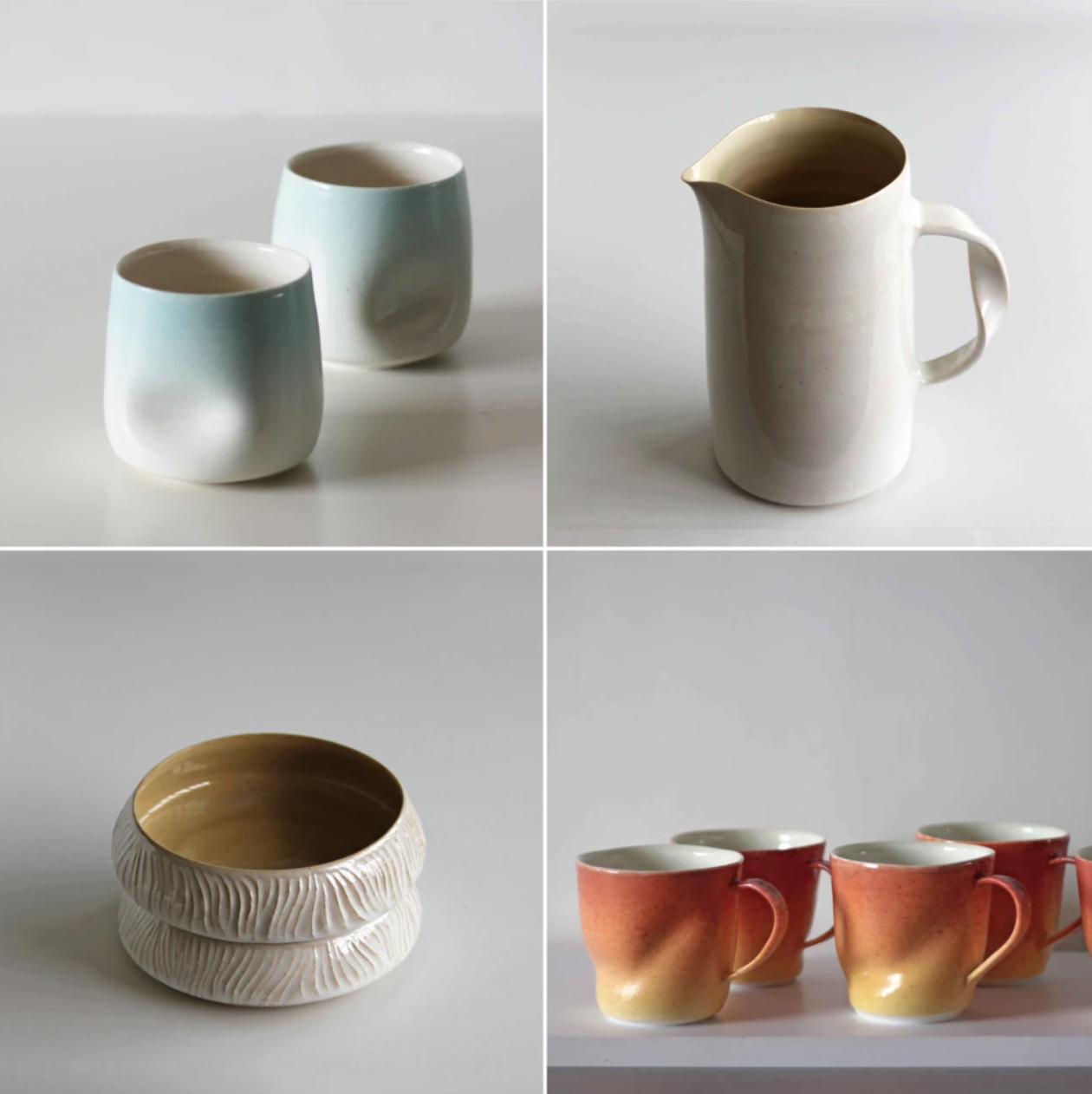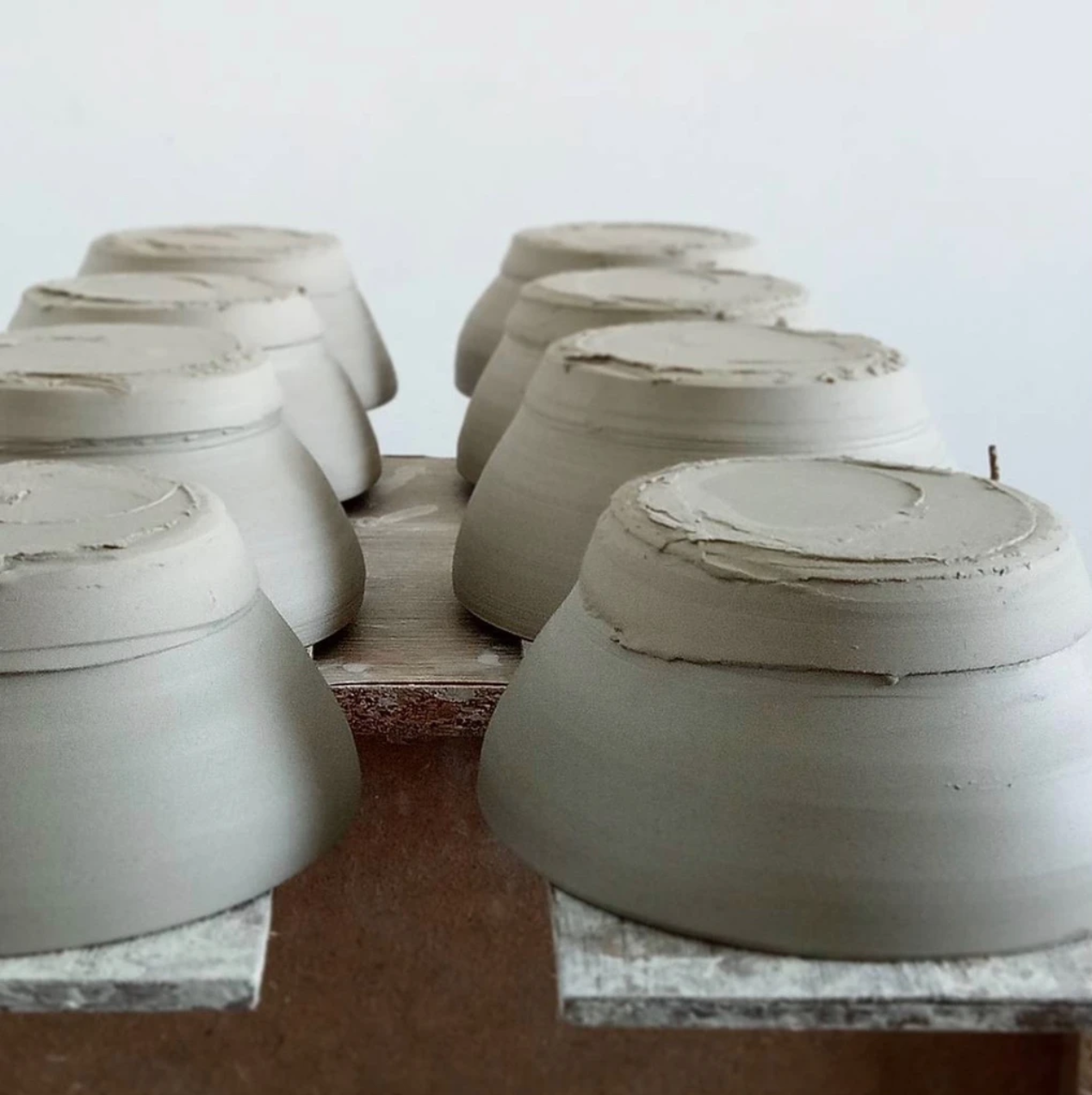Shining the spotlight on Omelet Trees Studio
Think of Singaporean contemporary potters and high chances are you would have thought of Omelet Trees Studio and their clean distinctive line of tableware. Our very first encounter with them was way back in 2017 at The Local People's art market under the West Coast viaduct (talk about unconventional spaces) where we just ogled at all their work. There weren't many local potters back then, so it was very refreshing to see new faces!
Some of their older work in their home studio
Making full use of the residual warmth from the cooling kiln to speed up the drying process of these catchall dishes
Coming full circle, we finally reached out and got in touch with Nigel and Sarah, the husband-wife duo behind Omelet Trees Studio.
Hi guys, how would you describe your relationship with pottery?
Pottery has never been foreign to us. You can say that we grew up with it, having played with clay since we were 10. But we got really serious about it sometime in mid-2016 after a series of wheel-throwing classes. The situation escalated quickly and before we knew it, we had plaster boards, bags of clay, an electric wheel, glazes, and a kiln in our tiny home studio.
OTS's home studio in a spare bedroom. Due to space constraints, the wheel has to be backed up against the wall when the kiln is firing.
Most of their work are hand-thrown on the electric wheel
Greenware waiting to be trimmed
You guys definitely have a lot of passion for pottery! What makes you love pottery so much?
The challenges and possibilities are endless. There is just so much to learn! Also, we love the fact that it's one of the oldest crafts in the world. The part that gets us the most is the fact that many times things don't work as they should, but that's just life, isn't it?
Their private miniature vessels collection
Earthenware hanging-planters
"Sample cups that never really took off because of various glaze problems and issues with form."
A one-off sgraffito bowl that they experimented with
Many artists dream of having their own studio. We know that you started off with a home studio and are now working from a bigger workspace. What are the benefits and drawbacks of working from a home studio?
Having a home studio means being able to work flexibly without the strain of travelling, but it also means that we need to maintain an extremely high standard of cleanliness. Because we started out this way, we've learnt to work very cleanly. That really helps with the processes overall.
Of course, this then means that working in an external studio has everything inverted: travelling becomes an added restriction but it also translates to more space and a greater margin for dirt and dust!
Also, transporting wares to and fro from a kiln located at an external venue, before we got out own kiln) is just too nerve-wrecking. We tried it once and gave up!
The communal front-loading kiln in their new workspace is able to accommodate a lot more pieces.
Your products have a certain distinctive style. We are intrigued on your creative process!
Our work is largely inspired by feelings of serenity and calm, which serve to be deliberate beacons of clarity in our fast-paced society.
Most of our product creation begin with a few sketches. But the designs take on a life of their own once they are realised in clay. Sometimes what is created in 2D doesn't directly translate to 3D; modifications and improvements are always in the pipeline.
Freshly thrown stoneware dimple cups
Trimmed, and already with the dimple, just waiting to be stamped.
Bisque firing!
Glazed before its last and final firing
The final product, comfort dimple cups, in their new stone blue glaze.
It looks like most of your products are wheel-thrown. Do you have a preferred pottery method?
We work mostly with white stoneware and we usually fire to a Cone 6. Almost all of our items start out as a lump of clay on the electric wheel, but of course, some other elements are necessary to achieve the final product. Other than that, there isn't a specific method we work with, clay is simply too versatile to remain with one method of work.
Their porcelain flow series that will be available at our open studio
WIP hand-carved pleats shell bowl. OTS got the inspiration for this design from seashells!
Do you have a ceramicist that you follow closely or are inspired by?
Definitely. I love Adam Russell of Keywest Pottery for his sheer rockstar approach to pottery. And Moondobang for his extreme level of economy and precision in craftsmanship.
Okay, last words. We know a lot of Singaporeans who can't understand the idea of paying $30-40 for a handmade mug (especially with IKEA and Daiso selling them for a couple of dollars). How would you convince them otherwise?
We don't, or rather, we can't - as a single entity. The movement towards appreciating the handmade needs to be a whole-of-society approach. Mechanical reproduction proliferates the ceramic industry, and uniformity has become the norm. To break out of the norm, we would need all of us to persist in preserving and promoting the handmade.
One last final touch - a wet sanding on the base with a fine grit sandpaper to smoothen the base before it's ready for purchase, gifting or decoration.


















